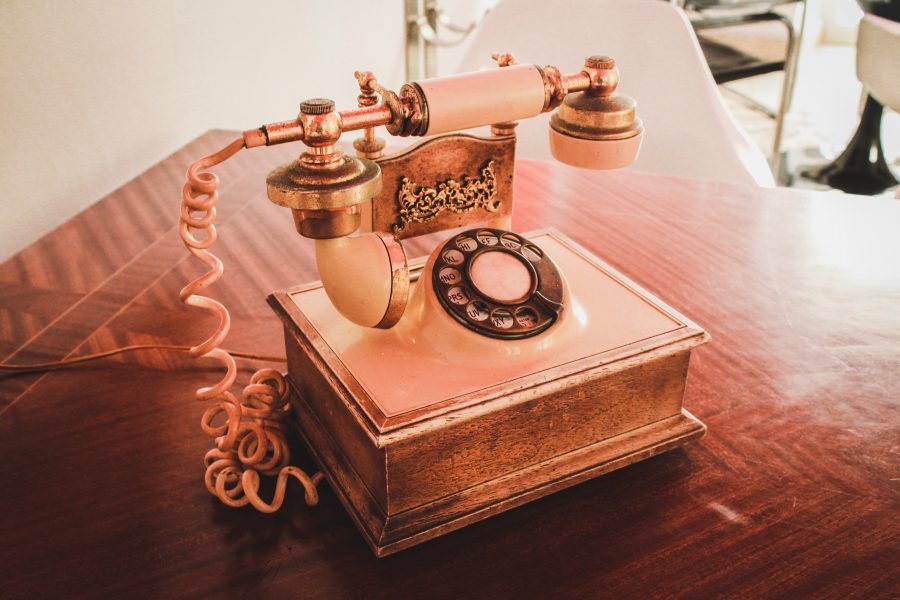In today’s world, conference call etiquette is a vital part of your professional toolbelt. In fact, because of the many uses of group phone calls, knowing the expectations for hosts and participants is becoming a basic inter-personal skill. At the same time, though, planning a conference call requires you to consider some factors that don’t come into play in a business meeting.
And maybe the practice isn’t all that familiar to you. There are certain industries where adoption of new technology has been slower. Look at the charitable sector, for example. Despite how much charities can gain by embracing technology, and how useful conference calls are for non-profits, it’s a field notorious for struggling to keep abreast of developments.
If you’re in an industry where audio meetings aren’t a daily occurrence, this guide to conference call etiquette can help you feel at ease. Getting to grips with these tips will allow you to make the most of this powerful communications tool and start conference calling as much as you should. There are also people who simply think conference calls waste time. But that’s normally because they don’t follow good conference call etiquette – these tips ensure conference calls are never a waste of time.
Conversely, if you’re somebody who’s always on a teleconference, it’s never a bad idea to brush up on your conference call etiquette. It can be easy to form bad habits and forget the basics when something becomes too everyday. So whether you’re the most seasoned telecommuter or just learning about call conferencing, read on for the ultimate guide to conference call etiquette.
Before the call
It’s true: way before you pick up the phone and dial in, manners matter. Many factors will affect attendees’ feelings towards the meeting before it has even begun. That in turn can impact the tone and productivity of the whole call. As soon as you decide you want an audio meeting, prioritise conference call etiquette.
The first step of conference call etiquette is choosing the right provider
This initial decision isn’t necessarily simple. There are a lot of conference call bridges out there. Choosing the right one for you means being certain of your unique needs and budget. But aside from that, you have to be able to sift through often misleading claims, and willing to consider alternatives to big-name providers. To help you narrow your search, here are some of the key factors to think about.
-
Hosting cost:
If you’re hosting the call, you’ll need to decide whether to use a service which requires monthly subscription fees or has an annual membership cost. Regular teleconferencers might already be paying for a plan. Otherwise, you might want a service which will provide you with genuinely free conference calls, as and when you need them – a service like WHYPAY?.
Create a FREE Teleconference -
Cost of attending:
This is really important. In most walks of life, we know that expecting guests to pay to attend something we’ve invited them to is bad form. Think about this in a professional setting and it might seem even more ludicrous. Imagine having a door-fee into the boardroom as your employees enter the weekly meeting. It probably wouldn’t go down well. So why do people think it’s okay to expect attendees to accept hefty phone bills to join an audio meeting? That is definitely poor conference call etiquette.
Instead, find a teleconference that’s free to dial into. The best way to guarantee that is choosing a provider whose conference calls are accessed using an 03 number. Calls to these numbers are included within callers’ bundled minutes, according to Ofcom rulings. As long as they have minutes available, participating in the meeting won’t cost a penny. -
Accessibility:
Again, making people jump through hoops to attend your meeting is never going to be deemed good conference call etiquette. While some people might have conference call phones in their office, not all do. Plus, many teleconferences happen to facilitate remote work. People might be joining the call from all sorts of free meeting locations. Look for conference calls which can be accessed via mobile, landline or smartphone.
-
Reliability:
A big part of ensuring conference calls don’t become a waste of time is picking a provider that won’t keep dropping out. Even if the call itself lasts, a crackly line is no better. It’s frustrating for everybody. Nobody wants to spend half the call yelling the same thing down the phone repeatedly, hoping somebody can decipher it. And hearing 20% of each sentence is equally infuriating. And obviously this will seriously damage productivity as well as morale.
Before committing to a conference call provider, safeguard your conference call etiquette using services like Trustpilot. You’ll be able to see what other users’ experiences have been like – and whether the conference call bridge is as highly rated as WHYPAY?’s Trustpilot page! -
Security:
Obviously conference call etiquette, like all etiquette, is generally about making people feel as comfortable as possible. Assuring them their information and ideas are safe is vital. Pick a conference calling service that prioritises security. Make sure the provider protects your privacy with unique dial-in numbers, secure PINs, or other digital safeguards. You can also find tips to make your conference call as secure as possible.
Timing is crucial in conference call etiquette
After you’ve nailed down a provider, it’s time to think logistics. When will the call happen? This might seem like the most minor consideration, but it can determine who attends and their attitude when they join.
There have been some studies into the best time for conference calls. Yet there’s (unsurprisingly) still conflicting advice out there. Generally, consensus seems to favour Tuesdays. But there’s lots of doubt about whether to opt for morning or afternoon.
Ultimately, there’s no easy cut-and-dry answer. One of the main advantages of conference calls is they allow flexibility. With them, people who might not be able to be in the office during normal working hours can still be a pivotal part of the team. But insisting upon audio meetings being held at 3pm on a Tuesday can throw a spanner in the works.
Think about the reasons somebody might be working remotely. Maybe they need to be able to care for children. A teleconference in the middle of the school-run isn’t going to work. Perhaps they’re freelancing, and have other commitments during office hours. Factor in any international dial-ins and you might need to think about different time-zones, too.
The most important thing in conference call etiquette regarding picking when to host the meeting is ensuring you’re taking everybody’s needs and schedules into consideration, as well as those of the project. If you have any doubts, it’s absurdly easy to just send round a quick poll to find out when would suit everybody best!
Make and circulate an agenda
Without properly preparing, you risk your meeting descending into chaos. That definitely isn’t desirable conference call etiquette. Crafting a detailed agenda will force you to determine the exact purpose of the meeting. This in turn helps you stay on-track throughout.
It also requires you to break down your objectives into smaller targets and points to cover. Think about what needs to be achieved and discussed during the meeting to reach your goal. Then figure out the logical way to hit these areas. After that, assign each topic, question, or section to the corresponding person. Be sure to include how long you expect to spend on each point too. And factor in question time!
You’ll create a document that lays out a clear schedule for the call. Now share your hard work! This is a great example of conference call etiquette, and generally considerate behaviour. It means everybody will know what to expect from the call, as well as what’s expected of them. They can prepare in advance, meaning not only do they turn up feeling relaxed and like their comfort and contribution are valued, but they’ll be ready.
That means their attitude will be on point, which makes a huge difference. But it will also make the meeting more productive, as nobody will be scrambling for their notes or bluffing their way through questions. Plus, it allows people to think about the sections they aren’t involved in, and formulate any pertinent questions. All in all, it’s boosting everybody’s conference call etiquette, and setting up a happy and useful meeting.
Conference call etiquette or party etiquette? Guest list is always key
If you follow our advice regarding making your agenda and assigning people to topics, you will have basically fulfilled this conference call etiquette requirement. As with any event, gathering the right group of people is really important. One common conference call mistake is simply inviting too many people.
We can see the temptation. With services like WHYPAY? accommodating up to 50 participants even within the free plan, you don’t have the same restraints as you might in a pokey boardroom. But sometimes, too many cooks really can spoil the broth. Having huge numbers of participants is another risk-factor in the quest to avoid chaotic conference calls. It can be right for some meetings, particularly those that take more of a presentation or lecture style, or even form part of an institution’s informational open-day.
Other times, it can mean people interrupt and talk over one another. Sometimes it becomes unclear who’s talking at any given time. Plus, it’s unlikely that so many people are directly involved in the specific project in question. If your guest-list seems lengthy, it’s likely you haven’t narrowed the focus of your meeting enough. That in itself will detract from its productivity. Have one single, concise goal for each meeting. Given you can have unlimited free conference calls with WHYPAY?, there’s no need to squeeze it all into one!
Create a FREE Teleconference
Be ready ahead of time
Don’t leave dialing in to the call to the last minute. Whatever the start-time is, you should try to get set up around 15 minutes ahead of time. That way, you’ll be ready and waiting with everything you need. Plus, if your location is going to pose any volume issues (incessant dog, over-zealous builders, joyful children…), you’ll know about it and hopefully be able to move somewhere quieter. It also means if anybody else dials in early, they’re not left awkwardly waiting for their host to show up. You’ll be able to greet each invitee as they arrive, and make sure everybody is introduced to each other.
You should also ensure that all of your other participants are on time. Many studies have found that one of the main culprits causing time-wasting on teleconferences is waiting for everybody to join and get settled. One way to ensure your attendees don’t suddenly remember the call as it’s starting is to pick a provider which makes it easy to schedule the conference call in your calendar software.
Conference call etiquette during the call
Surprises do not fall into the conference call etiquette guidebook
So stick to the script! You’ve gone to the trouble of making and sharing an agenda. Your attendees have studied it and prepared accordingly. If you then start the meeting and throw the whole plan out of the window, you can leave everybody feeling disoriented and frustrated – if not a little hoodwinked.
Show people that you value the time and effort they have put into familiarising themselves with the meeting schedule by actually honouring it. It will also help them to stay relaxed and engaged throughout the call, rather than flying into panics about when they will finally be called upon or what extra contributions they might have to make.
All in all, this is another example of conference call etiquette helping everybody. It ensure participants are relaxed and prepared. In turn, they’ll be more positive and productive. It also helps prevent the dreaded chaotic conference call – or perhaps worse still, an endless sermon-like droning from just one person, not dissimilar to the feeling of death by Powerpoint many of us may know. Stick to this conference call etiquette point to guarantee you hit all the meeting targets and its overall objective.
Silence is golden – and so is your mute button
As a straightforward, easy to use teleconferencing service, we know that sometimes the simplest tools are the most powerful. The mute button is another great example and most conferencing services have a built in mute function. Good muting controls can make or break a call. Make sure you familiarise yourself with how and when to use your mute button before the call. It might even be a good idea to share some brief basics along with your agenda or invitation.
Tip: Use a muting mode on your conference call if you have a very large number of participants. The mare callers you have taking part, the more background noise you’re likely to experience. Most conference services allow you to give different access codes to different participants, which allow you to dictate whether the participants is muted when they join, and whether they can unmute themselves or not.
Muting your line at appropriate times is another simple way of showing participants you care about their experience. It tells them you’re taking into consideration how distracting your background noise might be. And it’s especially vital to maintaining good conference call etiquette if you allow yourself to briefly multi-task during the audio meeting. If you do, you’re not alone. Reportedly, around 60% of people are doing other work while on a conference call. But not everybody needs to know about it. It can be downright offensive. After all, the sound of typing while somebody is speaking can seem just as rude as whipping out your phone in the middle of a conversation.
Even less blatant displays of disinterest or diligence (depending on how you look at it) can be distracting. You might decide to have a working lunch while you attend an afternoon audio meeting. Maybe you’ve just hit the mid-morning slump and need a pick-me-up to get your brain in gear and silence your stomach. Again, you certainly wouldn’t be doing anything unusual. 55% of people eat during conference calls. But we don’t all need to hear your slurping, crunching and munching! Just hit that mute button while you chow down. And make sure you remember to unmute yourself when you get to a part you’ll be actively contributing to!
Record your teleconferences
Another modest but mighty meeting tool is call recording. It’s a brilliant way of extending a little conference call etiquette, and reinforcing the message that you’re considering all attendees. Obviously you should let people know the call will be recorded beforehand. That’s just basic human etiquette! But beyond common courtesy, it can also boost productivity. If people know they’ll have access to the recording of the meeting, they won’t feel the need to be furiously scribbling throughout. That means they’ll be more present and engaged.
It will also make the transcriber’s job infinitely easier. Rather than scrambling to get down every word as it’s spoken, they can simply download the audio file and work through it at a time that suits them. Not only does that make the job easier, it will probably produce more accurate, useful, and well-presented transcripts.
Conference call etiquette matters after the meeting, too
Finish on time
Maybe you haven’t hit all the points on the agenda yet. Sometimes, things take longer than expected. Complications and questions arise. It’s important that you be flexible enough to allow for that. Forcing a schedule that isn’t working at the cost of leaving people confused or dissatisfied is not advisable.
But you can’t expect people to stay beyond the allotted time. Even simply giving them the option to leave if they wish is unfair. It puts pressure on people to remain on the call, especially if others are doing so. The reality is, everybody has other things to do. There are always projects to work on, jobs to get done, and even responsibilities outside work. You can always schedule another meeting. But if your conference calls are lasting longer than promised, you might not have any participants next time…
Don’t leave them wanting more
Equally, you should factor in plenty of extra time at the end of the call. Your schedule should have a slot dedicated to final questions and contributions. Whether you’ve worked your way through all the planned points or not, start to wrap up with plenty of time remaining. How much you want to leave is up to you. It will depend on the nature of the meeting’s objectives and the attendees. Just make sure it’s enough for everybody to have the chance to ask at least one question.
You should also make it clear that you welcome further queries or comments after the call via other channels of communication. That means even if one person has half a dozen questions and there isn’t quite enough time for that, they won’t be left puzzled. It also shows that you know it’s not always easy to voice your opinion in front of the whole team. Failing to give people this opportunity can mean you miss out on crucial insights or brilliant suggestions. Once more, conference call etiquette doesn’t just put people at ease, it actively helps your company.
School manners and conference call etiquette: share your notes!
Just as you shared the work you put into planning the call, you should then share the final result. After all, everybody contributed to making it! It’s easy enough to give everybody access to the call recording. And it can make a world of difference. With it, everybody can ensure they remember exactly what was said, and what’s expected of them going forward. It can keep everybody on-task and confident in what they’re doing.
If you use the recording to make detailed meeting minutes, circulate these too! It gives you a good opportunity to thank people for having attended the call, and to remind them that comments and questions are still welcome.
Now that you’re familiar with some basic conference call etiquette, you’re ready to host the best, most productive and polite audio meeting of your life! So create your audio meeting room and send out your invitations. Dazzle people with your brilliant conference call etiquette today.
Create a FREE Teleconference



